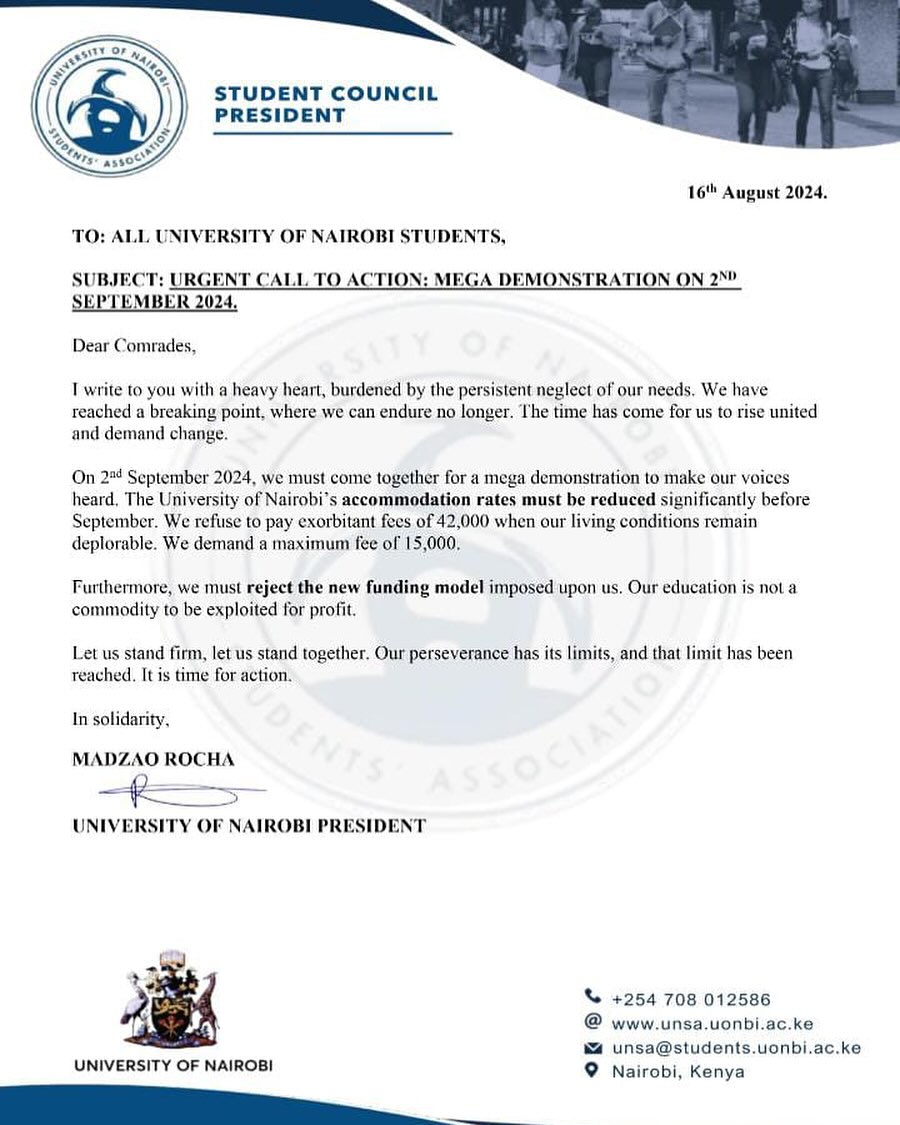Recent discussions and protests regarding university fee hikes in Kenya have triggered significant public dissatisfaction, particularly among students and families struggling with the rising cost of education. The situation is multifaceted, involving protests, government interventions, and broader economic challenges affecting the affordability of higher education.
The University of Nairobi (UoN) has been a focal point of student unrest. Students organized large-scale demonstrations in response to the newly capped accommodation fees of Ksh. 42,000. Their grievances extend beyond just accommodation costs, targeting the government’s implementation of a new funding model for universities, which they argue lacks transparency and fairness. This reaction reflects deeper frustrations with how these decisions are communicated and the perceived erosion of affordable education.
The Kenyan government, faced with growing public pressure, acted quickly to address concerns. After announcing fee hikes, a decision was made to cancel the planned increases for students placed in 2023. This move was part of the new university funding model, which introduced means testing to assess financial need. However, despite these measures, the protests have continued, suggesting that students remain dissatisfied with the overall trajectory of university costs.
Public discussions on X reveal widespread frustration. Many posts criticize both the government and student leadership, with some accusing student representatives of failing to advocate effectively for the student body. Others have highlighted a historical comparison, noting that student activism, once a powerful force for change, appears to have lost its edge. This criticism speaks to a broader concern about the growing financial burden on students and the lack of meaningful solutions being offered.
Economic Context
The fee hikes are happening against the backdrop of a broader economic crisis in Kenya, marked by proposed tax increases that have sparked their own waves of protests. This challenging economic environment is making it even harder for families to afford higher education, especially given the steep increases in some courses, which now cost up to Ksh. 600,000. The rising costs have brought to the forefront issues of economic inequality and access to education, with many fearing that higher education is becoming increasingly exclusive.
Other universities across Kenya, including Egerton, Moi, and Jomo Kenyatta University of Agriculture and Technology (JKUAT), have also announced fee increases, indicating that this issue is not limited to one institution. The collective action by students, demanding reductions in fees and clearer communication, highlights the extent of the unrest and the need for a more systematic approach to addressing these challenges.
The protests, coupled with the government’s response, point to a cycle of unrest that may continue unless a more sustainable funding solution for higher education is found. At the heart of the debate are critical questions about accessibility, fairness, and the future of education in Kenya. As discussions continue, there is a growing demand for more transparency in decision-making and a more equitable approach to university funding that considers the financial realities facing students and their families.
